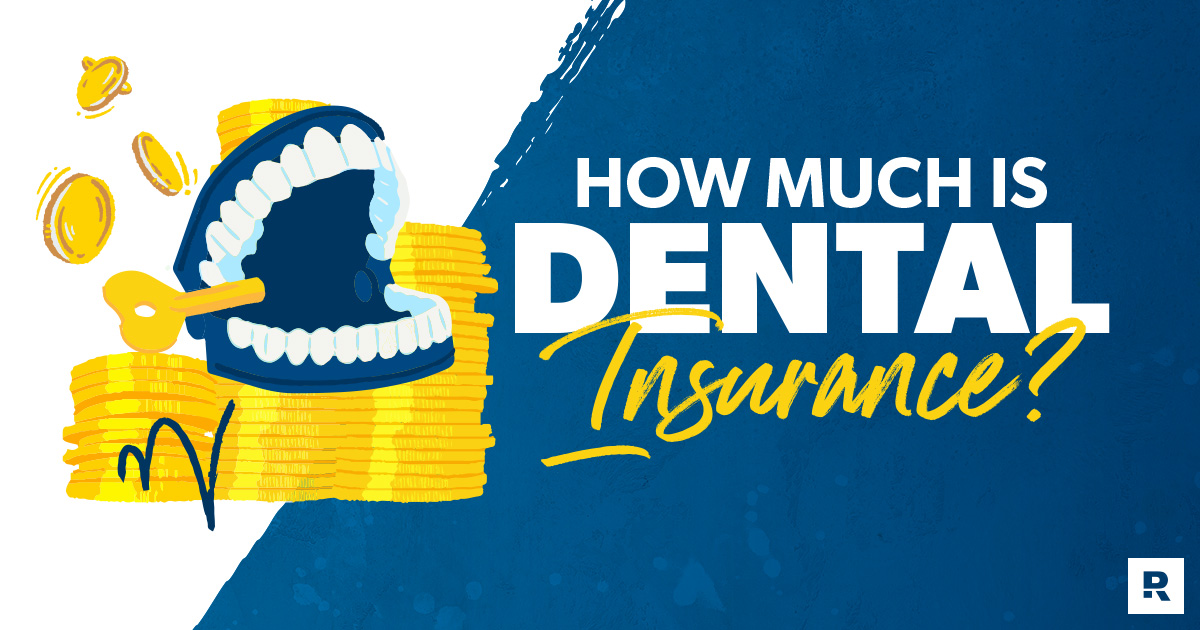
Very few people enjoy the dentist. Even fewer people enjoy paying for it. It seems like almost every semiannual cleaning visit quickly turns into a cavity filling (that dang sweet tooth gets us every time)! No matter what you go in for, you almost always leave the dentist’s office paying way more than what you anticipated.
Many people assume it’s wise to have dental insurance so they’re covered for all those unexpected toothaches. But how much is dental insurance really saving you? The answer may be scarier than the dentist’s chair itself. Let’s take a closer look . . .
How Much Is Dental Insurance
Typical dental insurance premiums range from $20–60 a month.1 Of course, that number can vary depending on your coverage plan, where you live and what your family situation looks like. But it sounds pretty reasonable, right?
It’s not unusual for a simple cleaning appointment to turn into some extra dental work. So, an extra $60 a month for dental insurance may seem like a no-brainer—until you sit down and do the math.
Let’s head back to the dentist’s chair for a minute.
Say your trip to the dentist for a cleaning turned into some X-rays and a cavity filling. The average cost for a cleaning without insurance is between $75–200.2 The cheapest filling option (the silver one) ranges between $50–150 for one or two teeth.3 And the X-ray will set you back anywhere from $100–200.4
For the sake of our story, let’s pretend you’re at a fancy-schmancy dentist office and have to pay toward the expensive end for all three procedures. After a couple hours in the chair, you head to the checkout desk to find a $550 bill waiting for you. Suddenly, your toothache has become a major wallet-ache!
Now, let’s rewind that same dental visit, except this time we have insurance.
The typical insurance plan covers 100% of cleanings and X-rays but only between 50–80% of the cost of cavity fillings. So, this time around you’re only facing a bill of about $30–75 dollars. We can all agree that sounds much better than $550!
You’re probably a little confused right now, thinking, Well, they just did all the math, and dental insurance is still looking like a good option to me! So we’ll just cut to the chase and explain why we don’t think dental insurance is worth the cost.
Let’s be honest: You’re not paying $550 every time you visit the dentist. (If you are, you probably need to start taking better care of your teeth!) The average American without dental insurance spends about $370 a year out of pocket for annual exams, cleanings and X-rays, according to the American Dental Association.5
But if you’re spending $60 per month on dental insurance, you’re shelling out $720 a year. So, even with one expensive $550 trip, you still would have paid less than what you paid for insurance. Plus, remember that a typical dental insurance policy doesn’t cover 100% of every procedure. Whether you have insurance or not, you’re still opening your wallet when you go to check out.
So, What Does Dental Insurance Cover?
Calling it “dental insurance” is a bit generous. Some insurance providers actually call it “dental benefits” because it works so differently from most insurances. And frankly, even calling it a dental benefit is generous because it doesn’t have many benefits.
While health care insurance covers costs after your medical bill hits a certain amount (your deductible), dental benefits only cover you up to a specific limit.
Think of dental insurance as more of a gift card:
When you pay your insurance ($240–720 per year), you essentially get a $1,000–1,500 “gift card” to spend on dental care. Once you max out the gift card, you’re responsible for taking care of the rest out of pocket.
The good news is, there’s only about 5% of Americans who hit their annual maximum, according to the National Association of Dental Plans.6 However, if you or a family member needs a root canal (a $500–1,500 procedure), you’ll hit that limit pretty quickly.
The bad news is, you can’t use that gift card for everything. That’s because
most dental insurance offer what’s called “100-80-50” coverage:
- 100% of preventive care is covered (except for visit co-pays). That includes periodic oral evaluations, cleanings, X-rays and sealants.7 You can put all of these on the gift card!
- 80% of basic procedures. That includes things like extractions, fillings, root canals and treatment for gum disease.8 It’s important to note, some plans may offer even less coverage (some even as low as 50%) for basic procedures.
- 50% of major procedures, including things like bridges and crowns.
What they don’t tell you about the 100-80-50 plan is that it’s really the 100-80-50-0 plan. That’s right—there are some dental procedures that usually aren’t covered by insurance at all (like dental implants). And these are usually the most expensive procedures!
So, once again, you’re still paying out-of-pocket expenses even if you haven’t hit your annual maximum. Plus, you’re shelling out hundreds of dollars just to get the gift card.
Are you starting to understand why we don’t recommend paying for dental insurance?
Get the health insurance you need from Health Trust Financial today!
When RamseyTrusted partner Health Trust Financial is in your corner, you’ll have peace of mind knowing you have the right health insurance that won’t break the bank.
How to Save on Dental Care
Check out dental discount companies.
We’re big fans of dental discount companies, like 1Dental.com. Dental discount companies are like having a Costco membership: You pay a flat rate of around $100–130 per year to join and then you get discounted rates on dental work. Dentists in these networks agree ahead of time to give lower prices to members in exchange for the advertising from the dental discount company.
Search for a deal.
The internet is chock-full of coupons for dentists. Many dental offices offer new client specials that may even include a free cleaning. Also, be sure to check out sites like Groupon and LivingSocial. You can usually score a cleaning for around $50 to $60.
Don’t be afraid to shop around.
We price check just about everything else—why not dental care? If your dentist gives you a pricey quote for an upcoming procedure, get a second quote! Shop around for prices at other dental offices. You don’t have to buy your kids’ braces from your pediatric dentist’s preferred orthodontist.
Ask for a discount or a payment plan.
If you need some serious (and expensive) dental work done right away, ask for a deal. Most places will give you a discount if you pay with cash at the time of your appointment. If you can’t shell out the big bills all at once, try asking for a payment plan (as long as it’s not a credit card!).
Use an HSA.
If you’re eligible for a Health Savings Account or already have one, the dentist’s office is a perfect place to use it! HSAs are tax-advantaged savings accounts that can help you pay for medical expenses tax-free. Think of it like an extra emergency fund that’s just for medical costs.
Visit a dental school.
For cleanings, X-rays and preventive care, consider making an appointment at a dental school. Don’t worry, the work you’ll receive by a dental student is always double-checked by a licensed, insured supervisor. You’ll likely have to wait longer for your teeth to be cleaned, but the money you’ll save is well worth it.
If you currently have dental insurance and aren’t convinced you should get rid of it, we encourage you to go through all the receipts. Are you spending a fortune just to have the promise of discounts on procedures you might need?
So much for dental. But what about health insurance? That's a form of protection we'll recommend you have all day long. Here are a few steps you can take right away to be sure you have the best health insurance in place for your needs.
Next Steps
- Read up on why health insurance is an essential part of a smart financial plan.
- Go deeper to learn more about how to get health insurance.
- To choose the right type of health insurance for you and your family, talk to a qualified health insurance professional. We always recommend our friends at Health Trust Financial. As our RamseyTrusted health insurance partner, they know their stuff. In fact, they've been serving Ramsey fans for over 20 years. When you work with Health Trust Financial, they can set you up with the best health insurance quotes and policies for your situation and explain all of the insurance jargon to you. Plus they'll never try to sell you something you don't need. Connect with them now!



